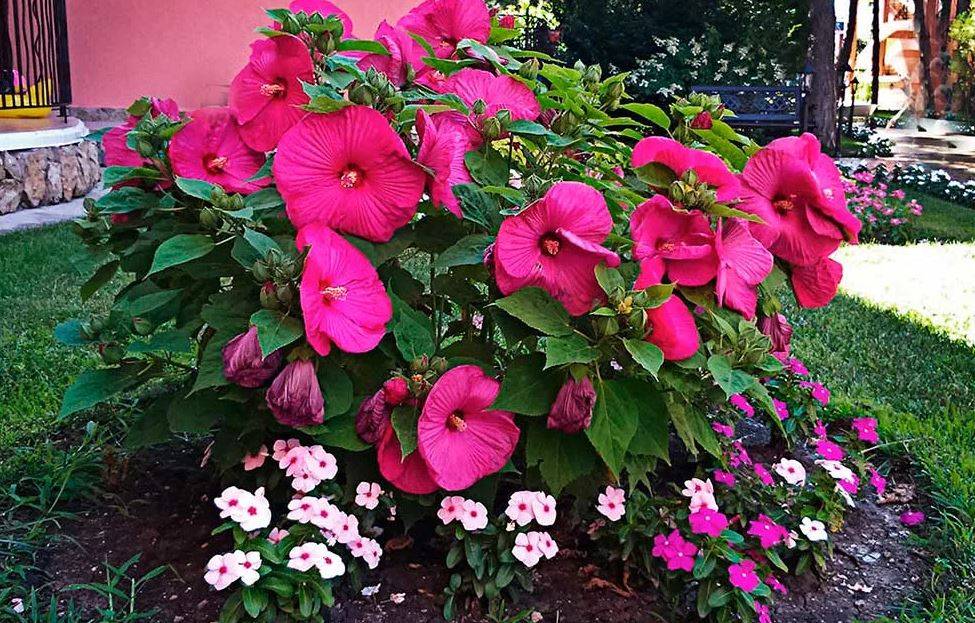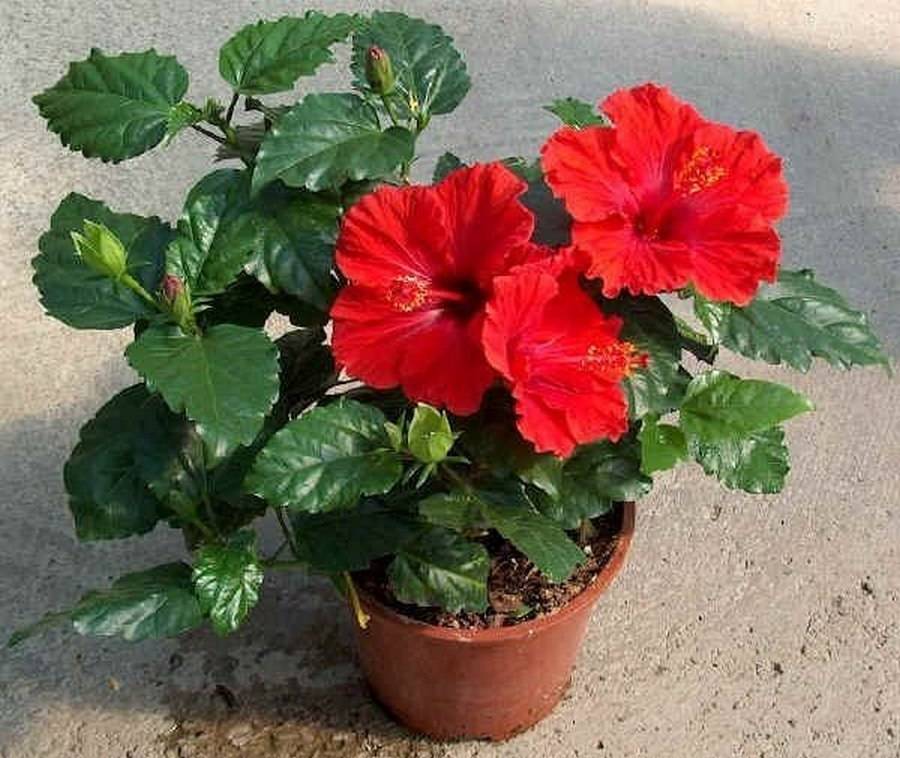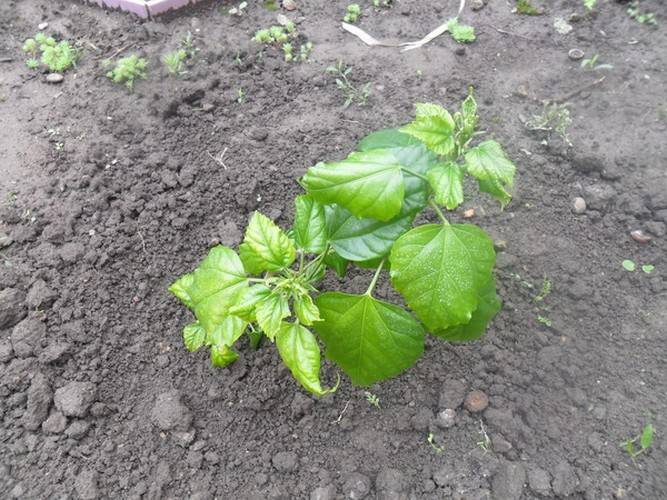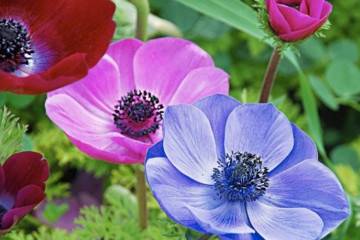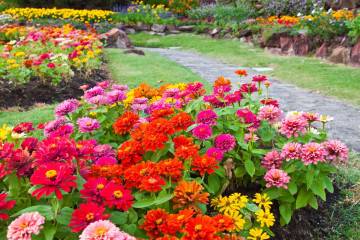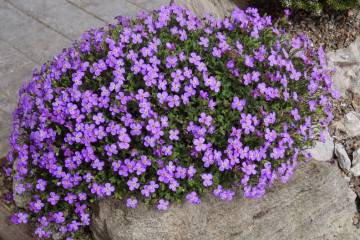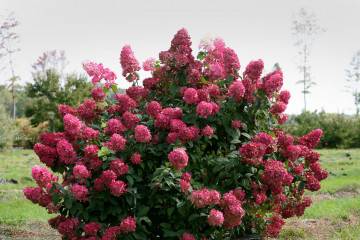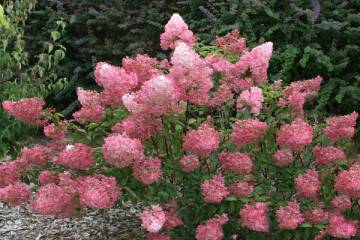Garden hibiscus or Chinese rose - species, outdoor cultivation
Content:
Garden hibiscus is a plant that is increasingly found in the areas of Russian flower growers. Despite the fact that the plant is native to the tropics, several of its varieties can be safely grown in the central zone of Russia, including the Moscow region. This flower pleases not only with its appearance, but also with the relative unpretentiousness of its content.
Garden hibiscus - Chinese rose
The second name for hibiscus is the Chinese rose. But he has others, for example, in Brazil it is called “princess earrings”, and in Hawaii “the flower of beautiful women”, the Malaysian interpretation of the name is “the flower of love”. In addition, it is the national symbol of Malaysia. It is printed on coins and coats of arms.
In European countries, home and garden varieties of hibiscus are considered the "flower of death", Europeans believe that it is able to suck out all positive energy, bring disease, grief and death. But in the East and in the countries of Asia, it is believed that it brings love, joy and happiness, and flowers that quickly fade take away all problems and troubles.
A general version was never found, so everyone chooses which one to adhere to.
The origin and appearance of the plant
The garden hibiscus flower is an ornamental flowering plant belonging to the Malvaceae family. Habitat - South China, India. It is also distributed in the southern parts of America and Europe, North Africa, and the countries of the East.
Botanical description of the plant:
- garden hibiscus is a tree with an extremely slow rate of growth, the maximum height is 1.5-2 m. It is most often a tall shrub or a standard tree. In natural conditions, it reaches more than 3 m in height and 2 m in width;
- perennial varieties are most often grown in flower beds, but there are annual options that require less maintenance;
- shoots are tough, erect with few branches;
- leaves are dark green small, serrated, they wake up only in late spring;
- flowering most often later, from July to mid-autumn;
- flowers are large, can be presented in various shades: white, blue, lilac, purple, red;
- the color of the flowers can be monochromatic or two-colored, often with a bright eye in the center;
- flowers are double, semi-double or simple.
Types and varieties
The following varieties of hibiscus are most suitable for growing in a temperate climatic zone: marsh, triple, garden, Siberian, Syrian.The most popular and frequently encountered are the last two types.
Syrian hibiscus
The Syrian hibiscus is a hibiscus tree that grows up to 2 m in height. It blooms with large bright flowers that look very much like mallow flowers. The main colors are lilac and white, but the selection does not stand still, so new hybrid varieties appear that bloom red, pink and blue buds. The flower stays on the bush for no longer than a day, after which new buds bloom on it.
Main varieties:
- Pink giant. Blooms very large, up to 12 cm in diameter, saturated with pink flowers;
- The blue bird is distinguished by its blue-violet color of the petals. The center of the opened bud is dark red. The diameter of the flower is up to 15 cm. The variety blooms throughout the summer;
- Jeanne Dark with snow-white double inflorescences with good care can bloom until the end of October;
- Rosalba is distinguished by its large pink flowers with a red heart. The petals of the variety are very smooth and thin, like silk. The flowering period is not very long - from July to early September;
- Pink flirting is distinguished by bright large purple flowers with a burgundy center.
There are many other varieties of Syrian hibiscus, widespread in the Central zone of Russia.
Siberian hibiscus
Siberian hibiscus is a hybrid variety that was bred specifically for growing in the cold regions of the country. These are hybrids that can survive wintering outdoors at fairly low temperatures.
Transplant after purchase in open ground
The question of how to plant hibiscus most often arises among novice flower growers. Transplanting hibiscus after planting in open ground is not too difficult, the main thing is to follow all the rules, then the flower will delight you with its bright and long flowering.
What is needed for landing
For planting, be sure to prepare the soil. It should be fertile, nutritious soil with good drainage. Clay soil is categorically contraindicated, since it retains moisture, as a result of which the plant's roots rot, which leads to a slowdown in its growth and development.
Before you start planting, it is worth preparing the soil - mix the garden soil with peat. Additionally, it is recommended to add organic and mineral fertilizers, as well as humus. This soil mixture must be thoroughly stirred and watered abundantly.
Choosing the best place
The best place will be a well-lit area, which will be sheltered from sudden gusts of wind and drafts. If you pick the wrong spot to keep the tree in the shade, you might not expect hibiscus to bloom.
Step-by-step planting process
How to plant hibiscus:
- After the seedling is purchased, it is forbidden to water it. The substrate in the container must remain dry until transplanting.
- In a prepared place, it is worth digging a small planting hole, pour a little drainage on its bottom, then a layer of the substrate prepared in advance, a little saltpeter on top, then more soil.
- The container in which the shrub hibiscus is located must be tapped on the walls properly. This is necessary so that the seedling can be easily removed along with the earthy clod in which it grows.
- The transfer is carried out by the transshipment method. This means that the seedling must be carefully pulled out of the pot, being careful not to touch or damage the root system.
- After the young plant is installed in the planting hole, all the voids are carefully filled with the prepared soil mixture.
- Only a planted Chinese rose is watered abundantly.Pour at least 10 liters of water under each bush.
It is worth considering the size of the area where the plant is planned to be planted. It should be large enough and free of other flowers and shrubs to allow a large enough hibiscus to grow and develop to its fullest.
The volume of an adult plant will be at least one meter, therefore, when planting several shrubs next to the planting pits, leave a distance of at least 1.5 m.
Reproduction
Care and propagation of garden hibiscus is easy and simple. These processes do not require too much time and effort. The Chinese rose propagates in two ways: cuttings and seeds.
Propagation by cuttings
Cuttings are prepared in summer. There should be 3 internodes on the blanks. The lower cut is treated with a root growth stimulator. Cuttings are planted in nutrient soil in a greenhouse or greenhouse and grow there until rooting. This process takes 1-1.5 months on average. After that, they are transplanted into containers, after the appearance of the first leaves, they are pinched, and then planted in open ground in a permanent place.
Growing from seeds
Seeds should be sown in early spring. To prepare the planting material, it must first be soaked in a solution of dark pink potassium permanganate for 10 minutes. After that, the seeds are immersed in a solution of epin or another root growth stimulator. Next, you should follow the instructions:
- A substrate is poured into the container, consisting of equal parts of peat and coarse river sand.
- The prepared seeds are slightly deepened at a distance of 4-5 cm from each other.
- The container is covered with plastic wrap or glass, placed in a warm place with a temperature of at least 27 ° C.
- The shelter is periodically raised for a short time to ventilate and moisten the soil (from a spray bottle).
- As soon as the first 2-3 leaves appear, the seedlings dive into separate pots. It is worth making sure that young plants do not stretch out. If this happens, the flowers need to be provided with additional lighting.
Flowers are planted in open ground in May, when the threat of return frosts has passed. Weak plants should be properly planted outdoors at the end of summer.
Care
Caring for a hibiscus, like planting this plant, does not require any special effort. This plant is quite unpretentious. It is required to perform a number of specific actions necessary for each decorative flowering plant. If for some reason it is not possible to grow a flower, you should once again carefully pay attention to all aspects of planting and care.
Watering mode
The soil is moistened with well-settled warm water. River soft water is preferable. Moderate watering is required, it is carried out as the top layer of the soil dries up. On hot, dry days, daily watering is recommended. In other weather conditions, the flower is watered 3 times a week.
Top dressing
Fertilizers should be applied at intervals of 2 times a month. During the next watering, dry mineral fertilizer is scattered over the soil, which will penetrate into the soil due to moisture.Feeding is also possible with a solution of chicken manure, but it should be diluted in a ratio of 1:30 so as not to burn the delicate roots of the plant.
Features of care during the flowering period
The flowering period begins in the early and second half of summer. At this time, it is worth carefully monitoring the external condition of the flower, in time to remove the inflorescences that have already wilted, but for some reason did not fall to the ground. Flowers should be fed with potassium-phosphorus fertilizers, excluding mixtures containing nitrogen.
Features of care during the rest period
During the dormant period, feeding, on the contrary, is carried out with nitrogenous fertilizers, which stimulate the development of the aboveground green part of the plant, the growth of a thicker lush crown of the shrub.
Preparing for winter
It is very important to properly prepare the flower for wintering. Do not be afraid that the flower has dropped its foliage in the fall. He always does this before wintering. In Central and Central Russia, freezing is unlikely with proper cover.
Before covering the bush, it must be watered abundantly (12-15 liters). Immediately after the soil dries out, it must be piled up as high as possible. Before this procedure, it is useful to add some river sand to the soil. At the onset of the first frost, the substrate is covered with several layers:
- shavings;
- sawdust;
- fallen dry leaves.
The branches are pressed to the ground as low as possible, and the flower itself is covered with several layers of special garden material. After that, a frame is erected above it, on top of which a spruce forest and another layer of insulation are laid.
Garden hibiscus is a wonderful plant, which is not difficult to care for, and its flowering will delight the gardener for a long time. Any form of hibiscus: herbal, shrub and tree-like, looks very impressive.
